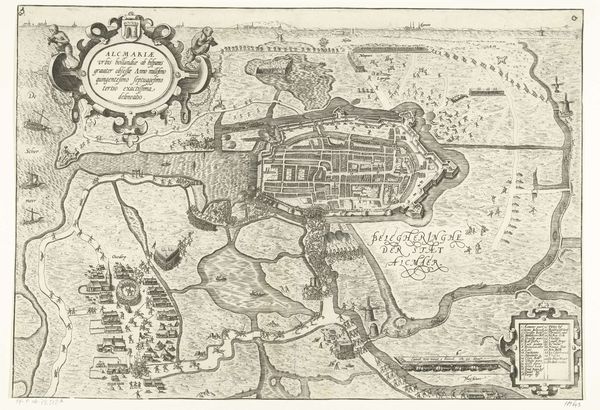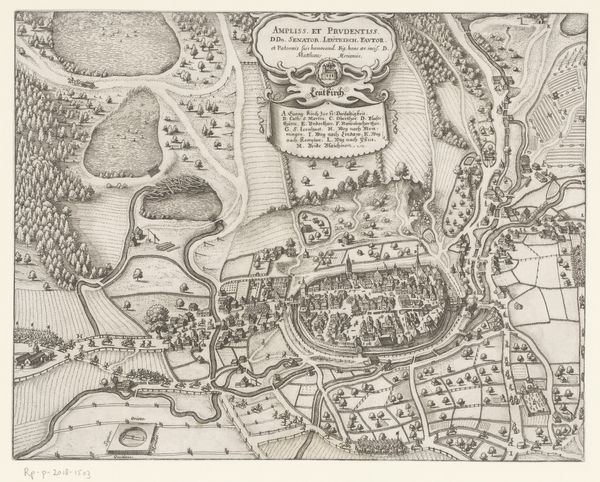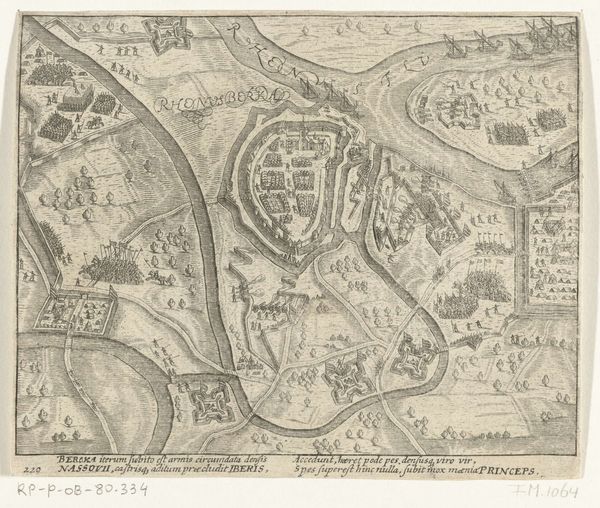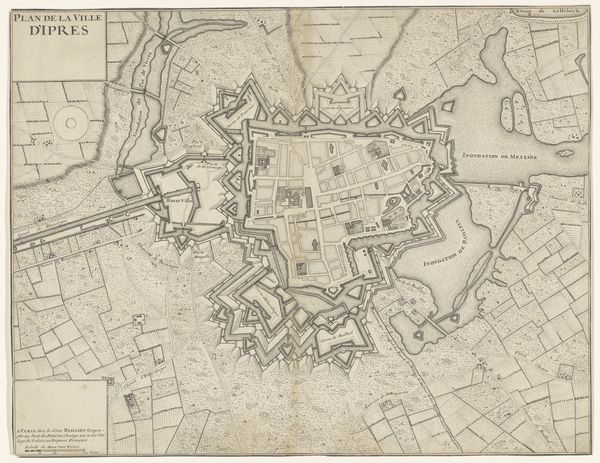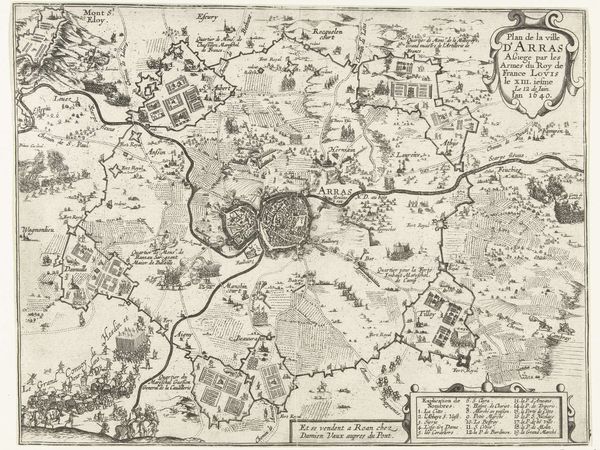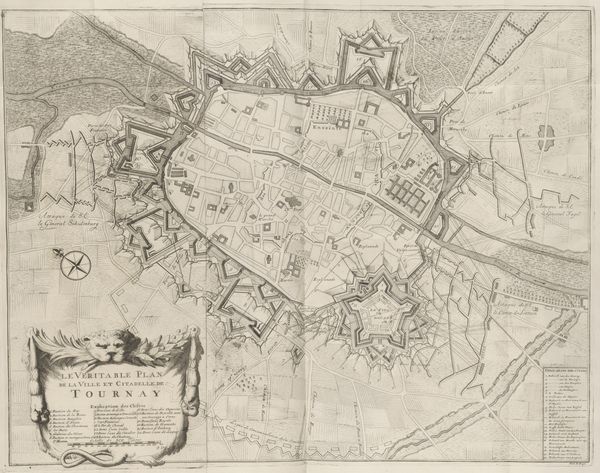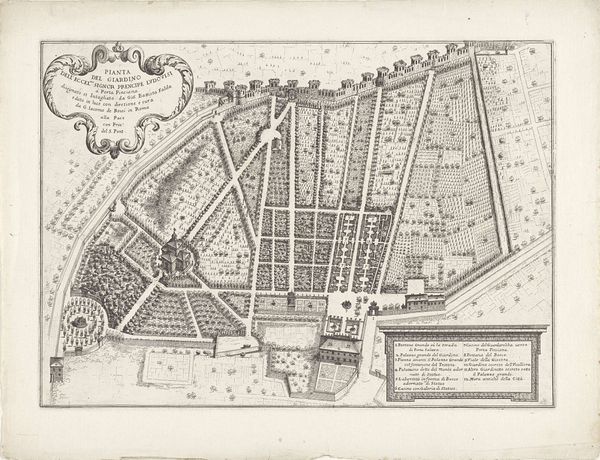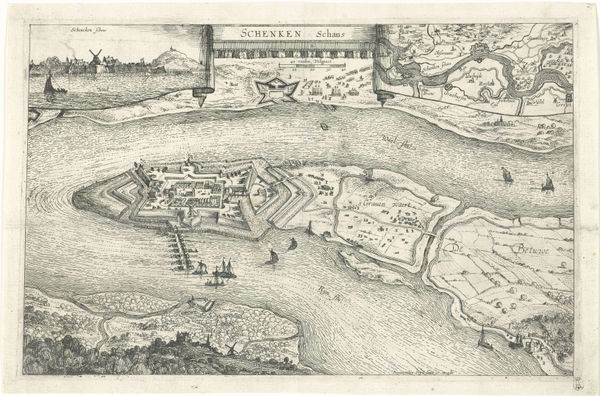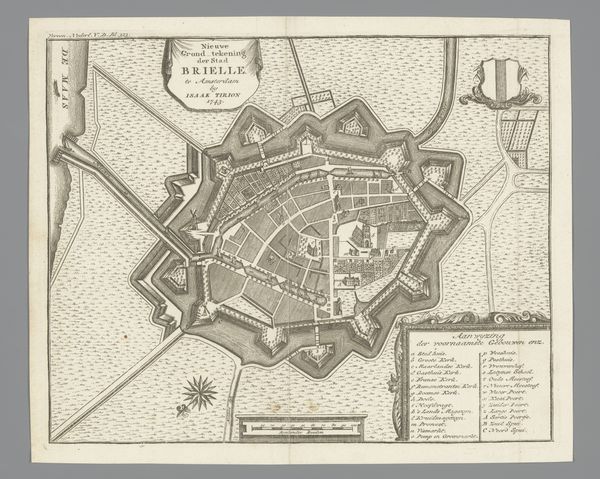
print, etching, engraving
#
baroque
#
dutch-golden-age
# print
#
pen illustration
#
etching
#
landscape
#
geometric
#
line
#
cityscape
#
history-painting
#
engraving
#
realism
Dimensions: height 258 mm, width 346 mm
Copyright: Rijks Museum: Open Domain
Curator: Let's discuss "The Siege of Hulst by Frederick Henry, 1645," a fascinating print held here at the Rijksmuseum. It meticulously details the siege using engraving and etching techniques. Editor: Immediately, what strikes me is the stark geometry—the elaborate fortifications forming a kind of spiderweb across the landscape. There’s such a contrast between the order of human intent and what must have been the chaotic reality of a siege. Curator: Precisely! Consider the context: it's 1645, during the Dutch Golden Age. This image presents a very specific perspective on warfare, reflecting not just the battle but also the Dutch Republic's ambitions and identity during this era. How does this fit within the visual language of power, and its use to project strategic dominance? Editor: I think what gets overlooked is the actual process behind these images. Think of the labour that went into surveying the land, producing the etching plates, printing and disseminating these. Each print became a tool to promote Prince Frederick Henry and the House of Orange. Who made the paper, ink? Whose hands made each impression and distributed these objects to their ultimate destination? Curator: You raise such a key point. Understanding the materiality, the how of its creation, anchors the piece in lived realities. For instance, the choice of etching and engraving speaks to a desire for precise reproduction but it also invites analysis regarding print culture and the proliferation of images and propaganda. Editor: Absolutely. Moreover, examining these printed materials alongside other accounts from the time can paint a broader view, that questions those official portrayals, that challenges this very manufactured image of order, control and total recall. Curator: I agree completely. Studying these images then gives rise to questions on power dynamics, national narratives, the technology that enables visual culture—there's an interplay of so many histories contained within this single image. Editor: It becomes a really layered investigation—historical, social, and above all material. I come away from this with new questions to explore, rather than simply an understanding of this image in isolation. Curator: Likewise; this etching reveals the power of perspective—both literally and figuratively—in constructing history. Thank you.
Comments
No comments
Be the first to comment and join the conversation on the ultimate creative platform.

